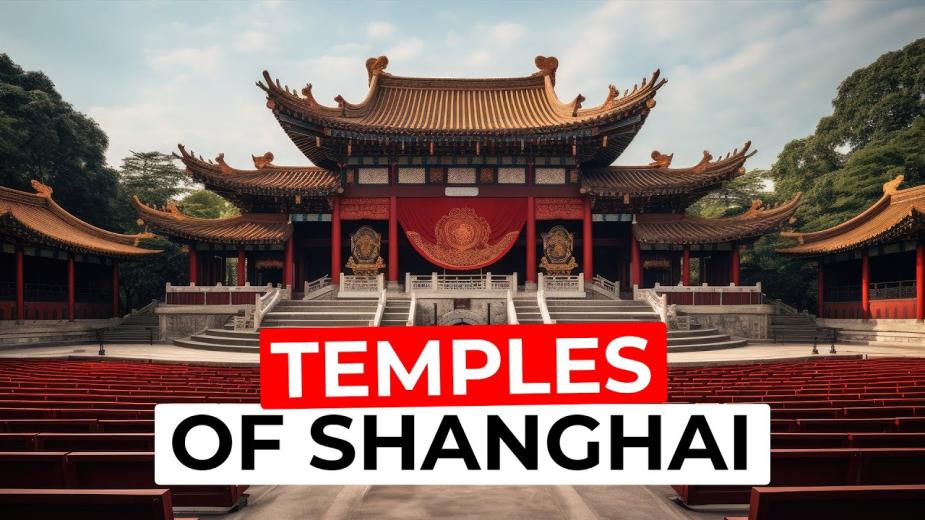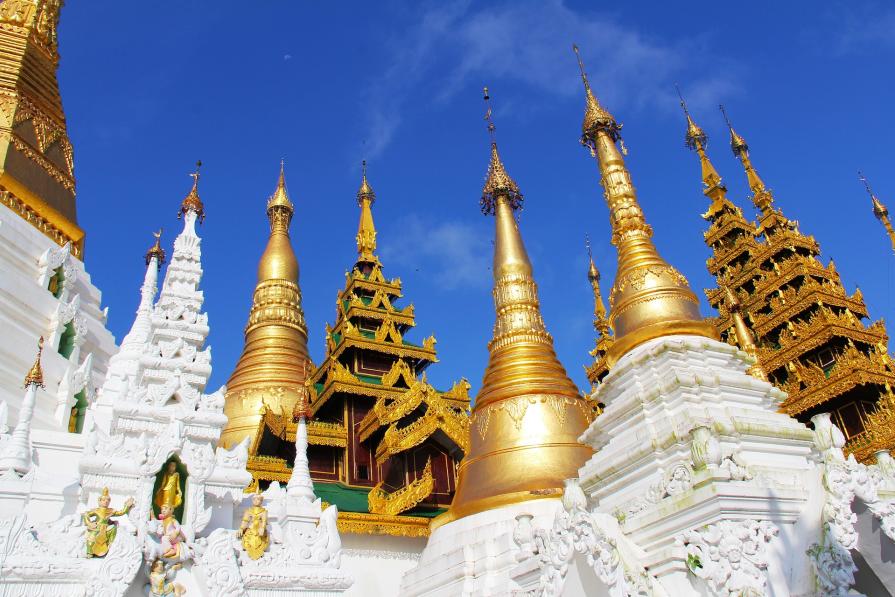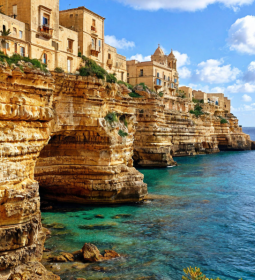We are accustomed to the fact that holy places are Jerusalem, Mecca and Medina, Rome and several other sacred places revered by fans of the three Abrahamic religions - Islam, Judaism and Christianity in all its versions.
However, there is something similar in any cult, large and small: some shrines are quite picturesque and colorful, others are nondescript, and still others are frankly frightening. Let's talk about some of the most famous ones.

Varanasi

One of India's oldest and holiest cities, Varanasi is an important center of Hindu religion and culture. Located on the banks of the sacred Ganges River, this city attracts pilgrims and tourists from all over the world seeking to touch the spiritual heritage of India. Especially revered are the ghats on the Ganges, first of all the Dashashvamedh Ghat, the central and most important of all the ghats of Varanasi. It is a place where Hindus perform ritual baths in the waters of the Ganges, believing that it cleanses them of their sins. This ghat is said to have been created by Lord Brahma himself to welcome Lord Shiva, and the most significant rituals in Hinduism are performed here.
Another important holy place in Varanasi is the Kashi Vishwanath temple, dedicated to Lord Shiva. This temple is one of the twelve Jyotirlingams, which are considered shrines of Shiva in India. Pilgrims from all over the world come here to pay homage to Shiva and ask for his blessings.
Kailash

Mount Kailash, located in Tibet, is an object of veneration for several religions, including Hinduism, Buddhism, Jainism, and Bon. The Tibetan pyramid on the mountain is one of the most mysterious topics associated with this sacred mountain, and in each of the religions, Mount Kailash is considered a sacred and important part of the spiritual tradition.
Among the numerous myths and legends associated with Mount Kailash, the story that it was allegedly built by people stands out. Proponents of this theory point to its almost perfectly symmetrical shape and geometric features, which, in their opinion, indicate its man-made origin. It is based on the fact that some peaks of Kailash have clear lines, resembling the faces of a pyramid.
Mount Kailash has been considered the center of the world and the axis of the universe in Tibetan Buddhism and other religions for thousands of years. For pilgrims, the circular motion around Kailash, known as kora, is an important religious ritual that is believed to cleanse from sins and promote spiritual rebirth.
Church of Las Lajas

The Church of Las Lajas, or Sancutariy Las Lajas, is located in the southern part of Colombia, near the border with Ecuador. It was built at the beginning of the XX century (from 1916 to 1949) on the site where, according to legend, in the XVIII century the miraculous appearance of the Virgin Mary took place. According to legend, in 1754, a local Native American woman named Maria Mueses de Quiñones and her mute daughter Rosa took shelter from a storm in a cave located in the canyon of the Guaytara River. Inside the cave, the girl suddenly spoke, pointing to the image of the Virgin Mary that had appeared on the rock. This case was recognized as a miracle, and the cave became a place of pilgrimage.
The Sancutarium of Las Lajas is built in the neo-Gothic style, which makes it stand out from other churches in Latin America. It rises 100 meters above the bottom of the canyon, connected to one side of the rock by a massive bridge over the river. The location of the church and its architecture create an impressive view that is often compared to the castles from fairy tales.
The interior of the church is also impressive: the walls are decorated with mosaics and paintings, and the altar is made of natural rock, on which the Virgin Mary once appeared. The church fits harmoniously into the surrounding landscape, and it seems that it literally grows out of the rock.
Bahai Gardens

In Haifa, along the slopes of Mount Carmel, magnificent hanging gardens cascade, which have become a place of pilgrimage for all followers of the Baha'i faith. For Bahá'ís, the Carmel Gardens are not just an architectural marvel, but also a symbol of their spiritual aspirations and belief in the oneness of humanity.
Bahá'ís are convinced that all human beings are equal, that God is one, and that different religious teachings are only different manifestations of the same divine source. This faith combines reverence for the great spiritual teachers of the past, such as Abraham, Moses, Buddha, Zarathustra, Krishna, Jesus Christ and Muhammad, as well as the founders of the religion, the Báb and Bahá'u'lláh. The Báb, the prophet and predecessor of Bahá'u'lláh, foretold his coming and became a crucial figure in Bahá'í history.
At the very top of the gardens rises the shrine of the Báb, surrounded by graceful terraces, each of which symbolizes the disciples of the Báb. There are 18 terraces in total, but with the addition of the upper level, where the tomb is located, their number reaches 19. This number has a deep sacred meaning for Bahá'ís: it symbolizes perfection and completeness. The Bahá'í Faith is so closely associated with the number 19 that their calendar consists of 19 months, each of which includes 19 days.
Shwedagon Pagoda

Myanmar's Shwedagon Pagoda is one of the sacred and revered Buddhist sites in the world. This golden stupa is about 99 meters high and towers over the city and serves as a symbol of Buddhism for millions of believers.
According to legend, the pagoda was built more than 2,500 years ago, making it one of the oldest Buddhist stupas in the world. However, historians tend to date its construction to about the VI-VII centuries AD. The pagoda was erected to store the relics of the Buddha - his eight hairs, which is of particular importance to Buddhists.
It is a classic Myanmar-style stupa surrounded by many smaller stupas and temples. Its central tower is topped by a spire set with diamonds, rubies and sapphires, and at the very top is a golden sphere with another 76-carat diamond inside. This exquisite work demonstrates the dedication and skill of the craftsmen who worked to create and decorate the stupa.
Over the centuries, the Shwedagon Pagoda has survived numerous wars, natural disasters and government changes, but each time it has been restored and decorated with even greater care and attention. Today, it is a symbol of perseverance and faith, and its golden dome, covered with tons of gold and adorned with thousands of precious stones, shines like a beacon of spirituality.
Mount Huashan

One of the five sacred Taoist mountains and a symbol of spiritual ascent and trials, it plays an important role in the Taoist tradition, symbolizing one of the main elements – fire, and embodies the principle of yang, an active and powerful principle. According to Taoist beliefs, Huashan is the place where gods and spirits reside on its peaks and in sacred caves. Here, monks and hermits have sought solitude and wisdom for thousands of years, striving for harmony with nature and the universe.
The mountain is famous for its ancient temples and monasteries scattered along its slopes. These holy places have become centers of religious practice and meditation. One of the most famous temples in Huashan is the Temple of the Jade Spring, which, according to legends, was created by Lao Tzu himself, the founder of Taoism. In this temple, as in other sanctuaries on the mountain, pilgrims perform rituals, pray and seek spiritual cleansing.
Huashan holds a special place in Chinese culture and literature, symbolizing resilience, wisdom, and fortitude, and her image is often used as a metaphor to describe difficulties on the path to enlightenment or achievement.














